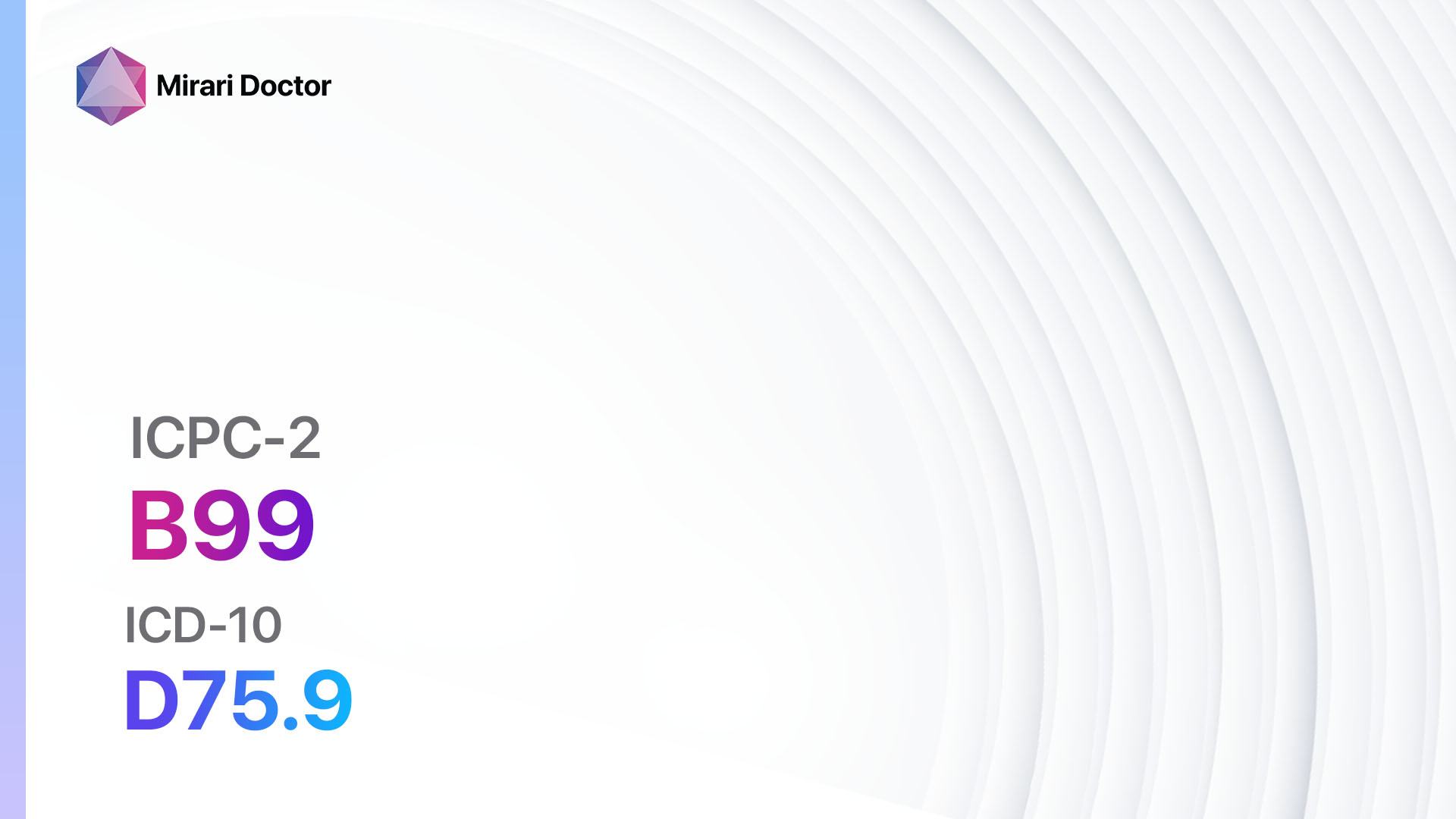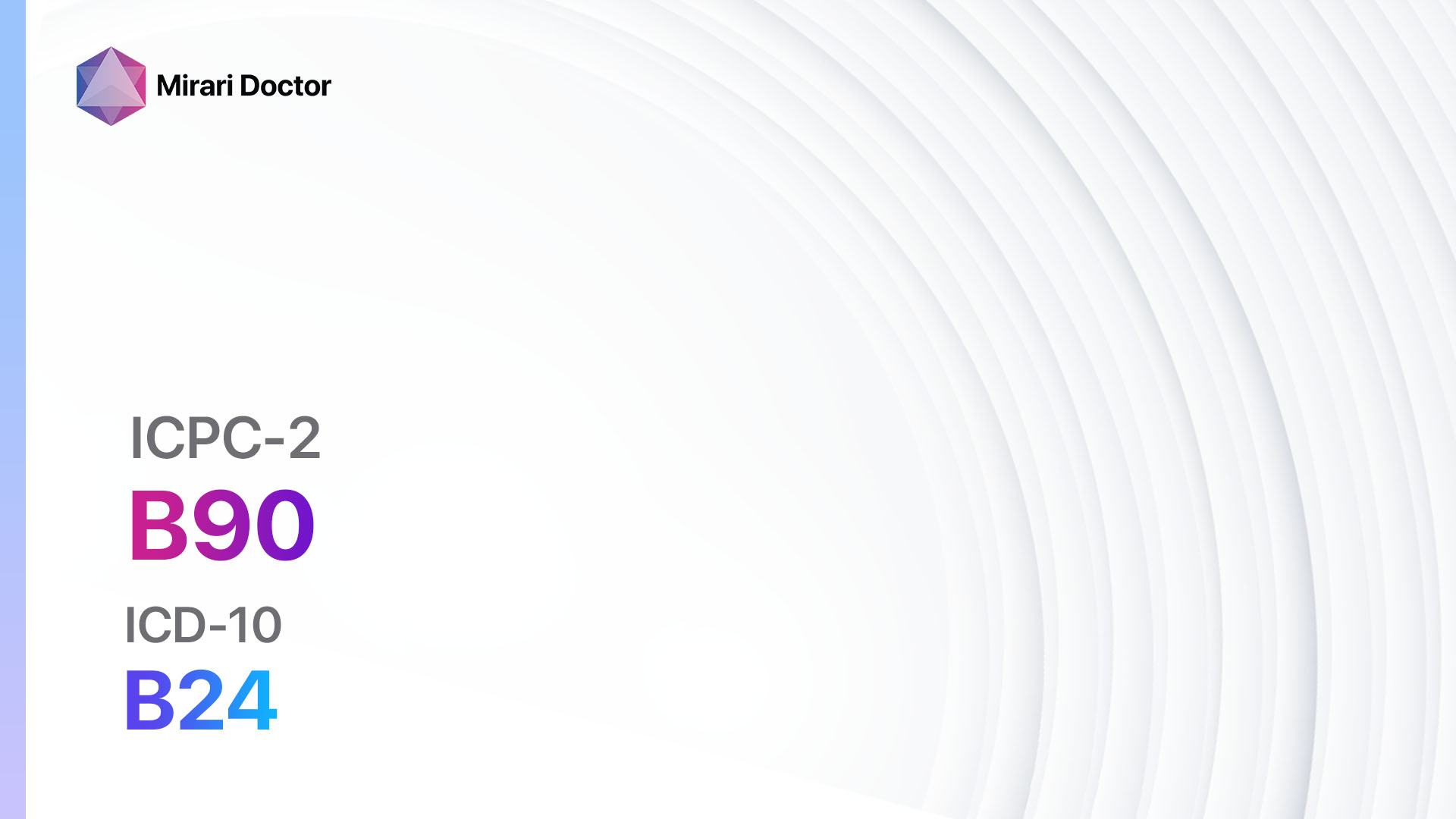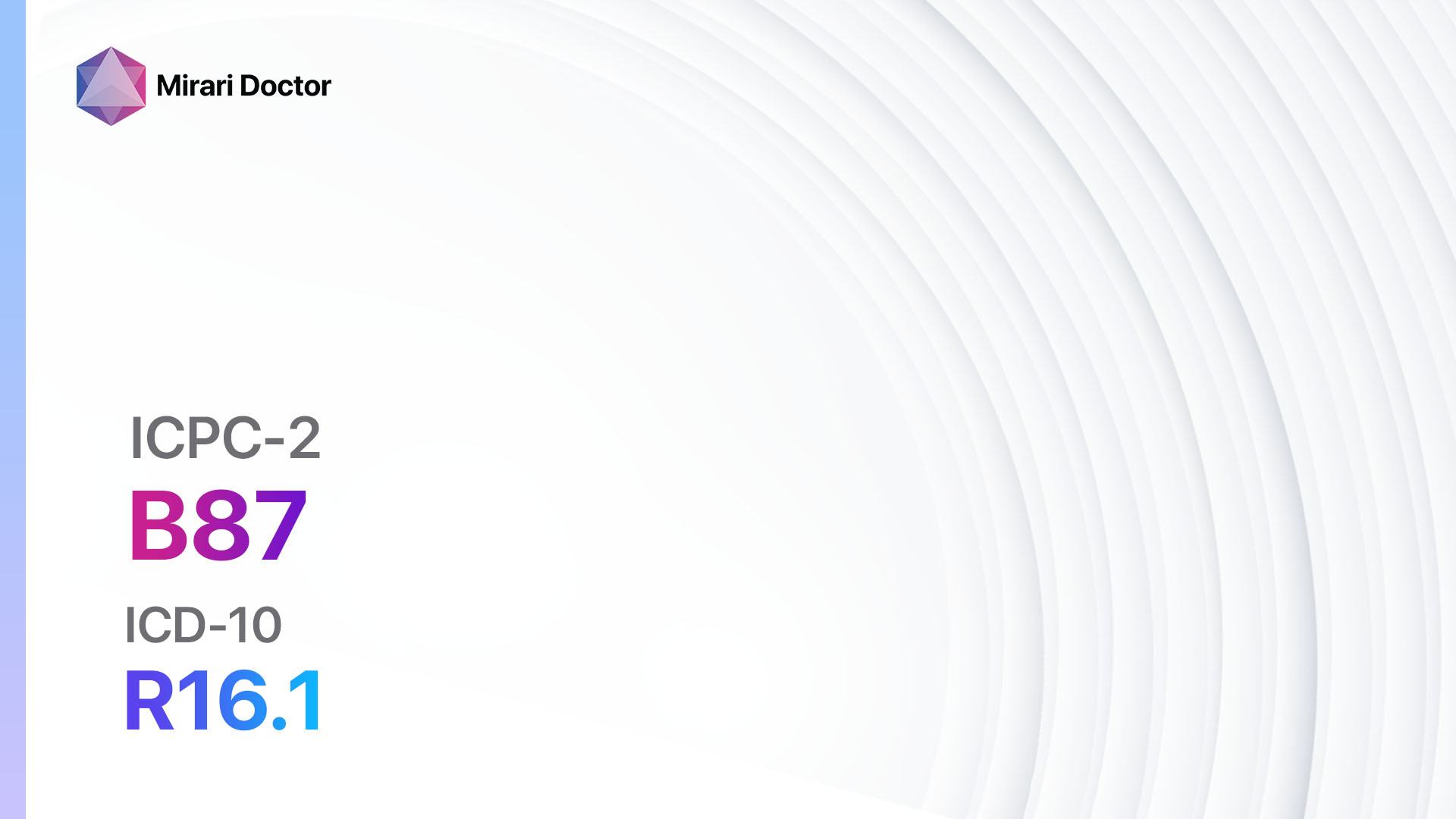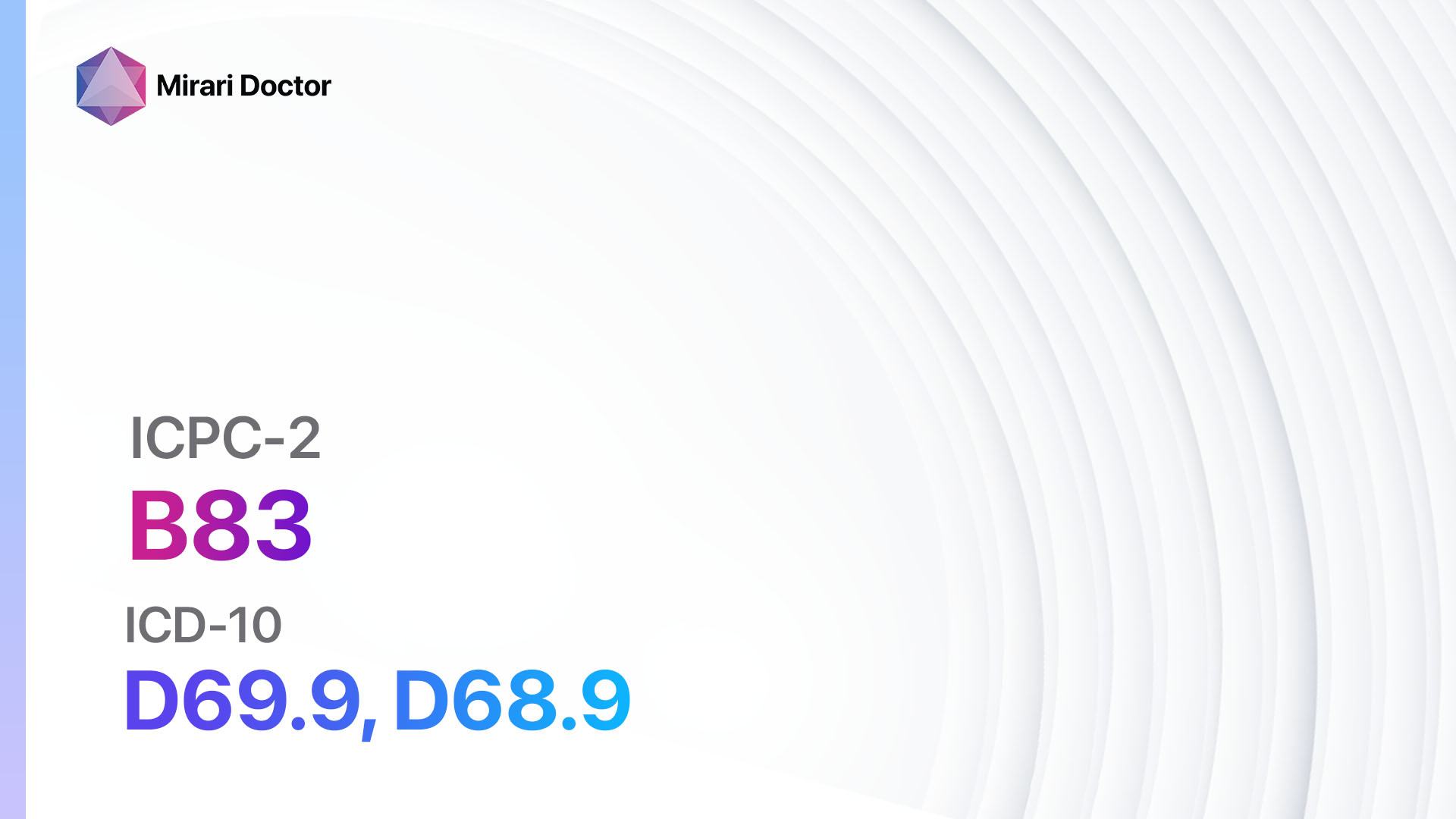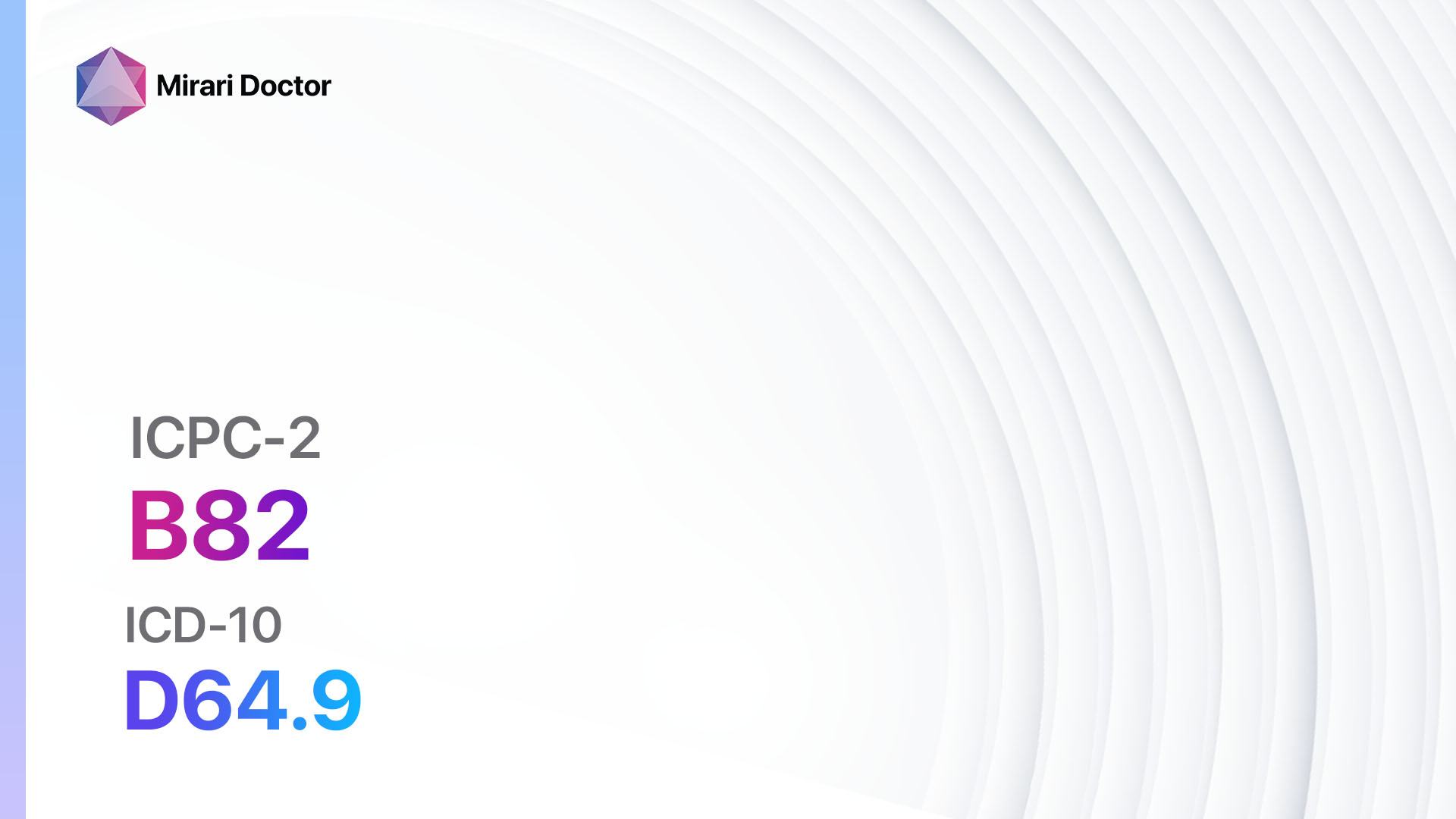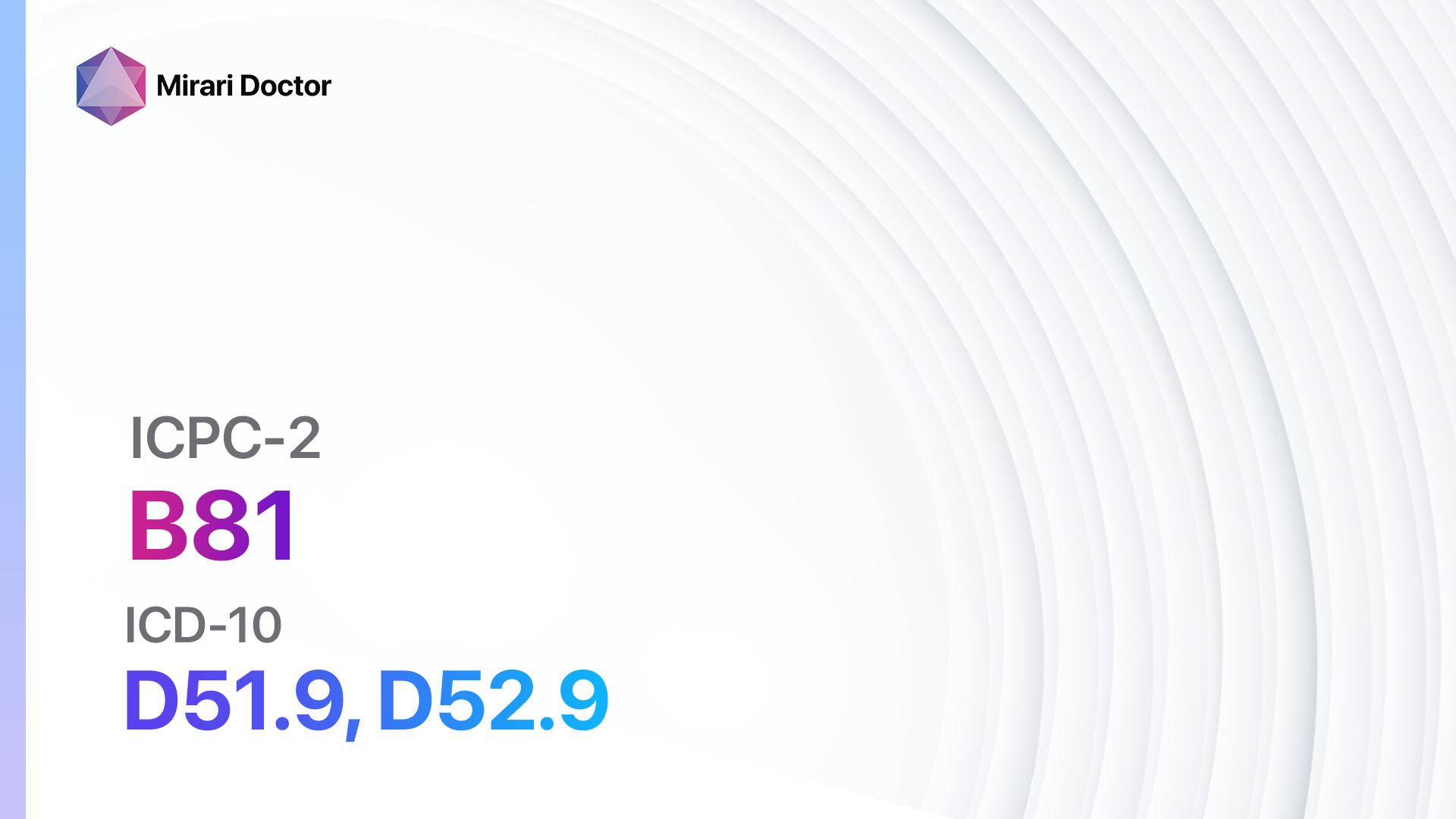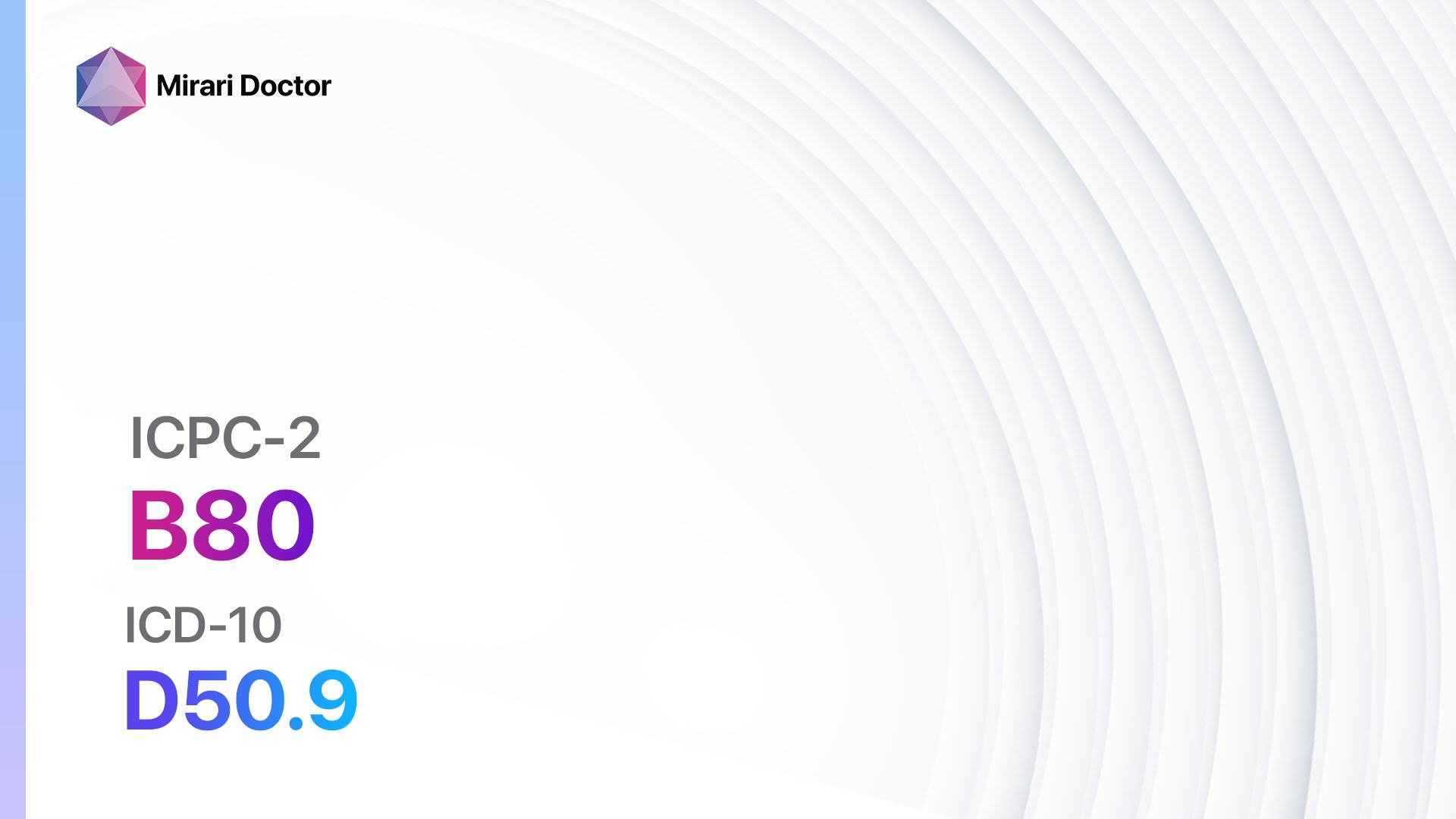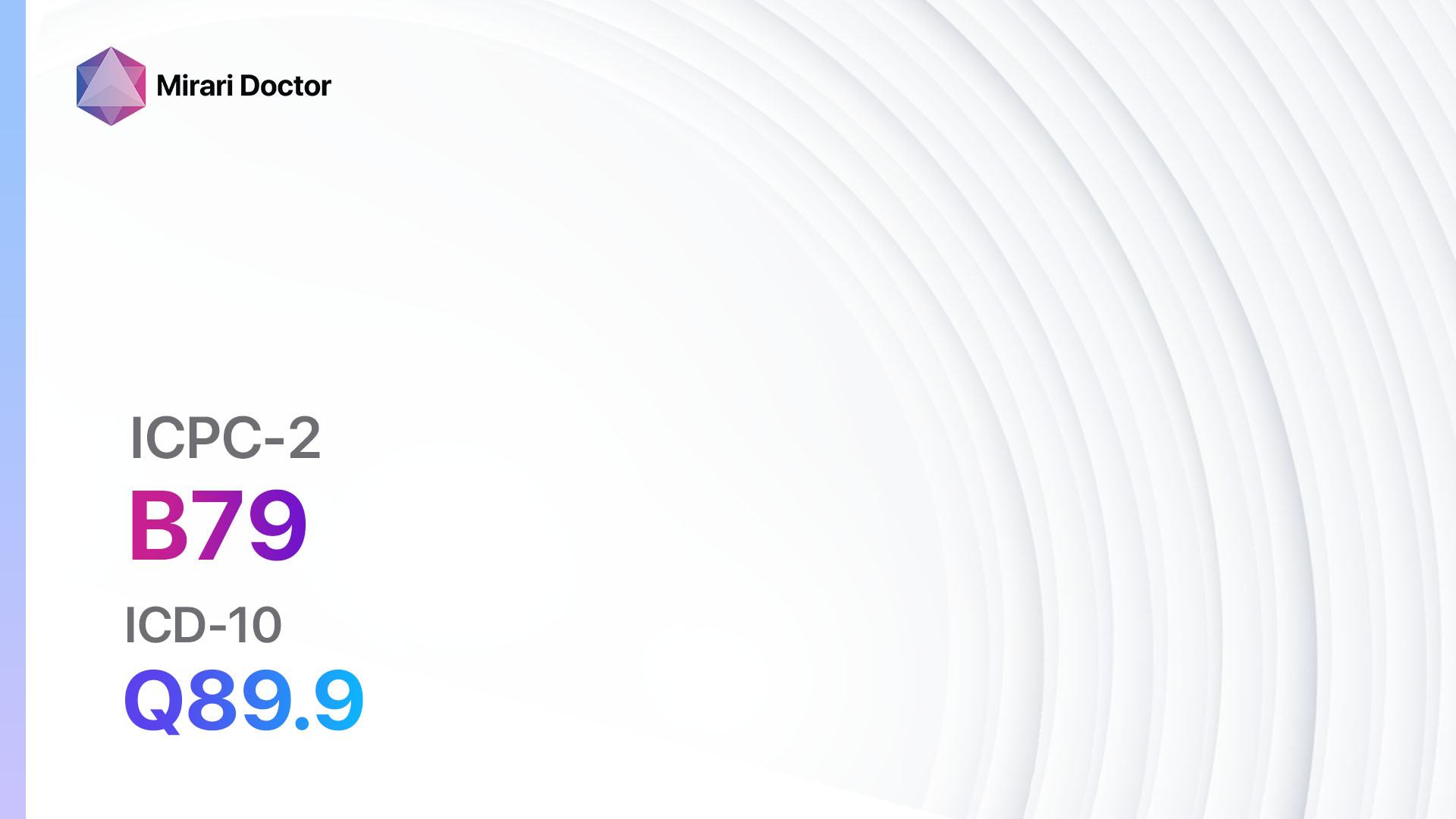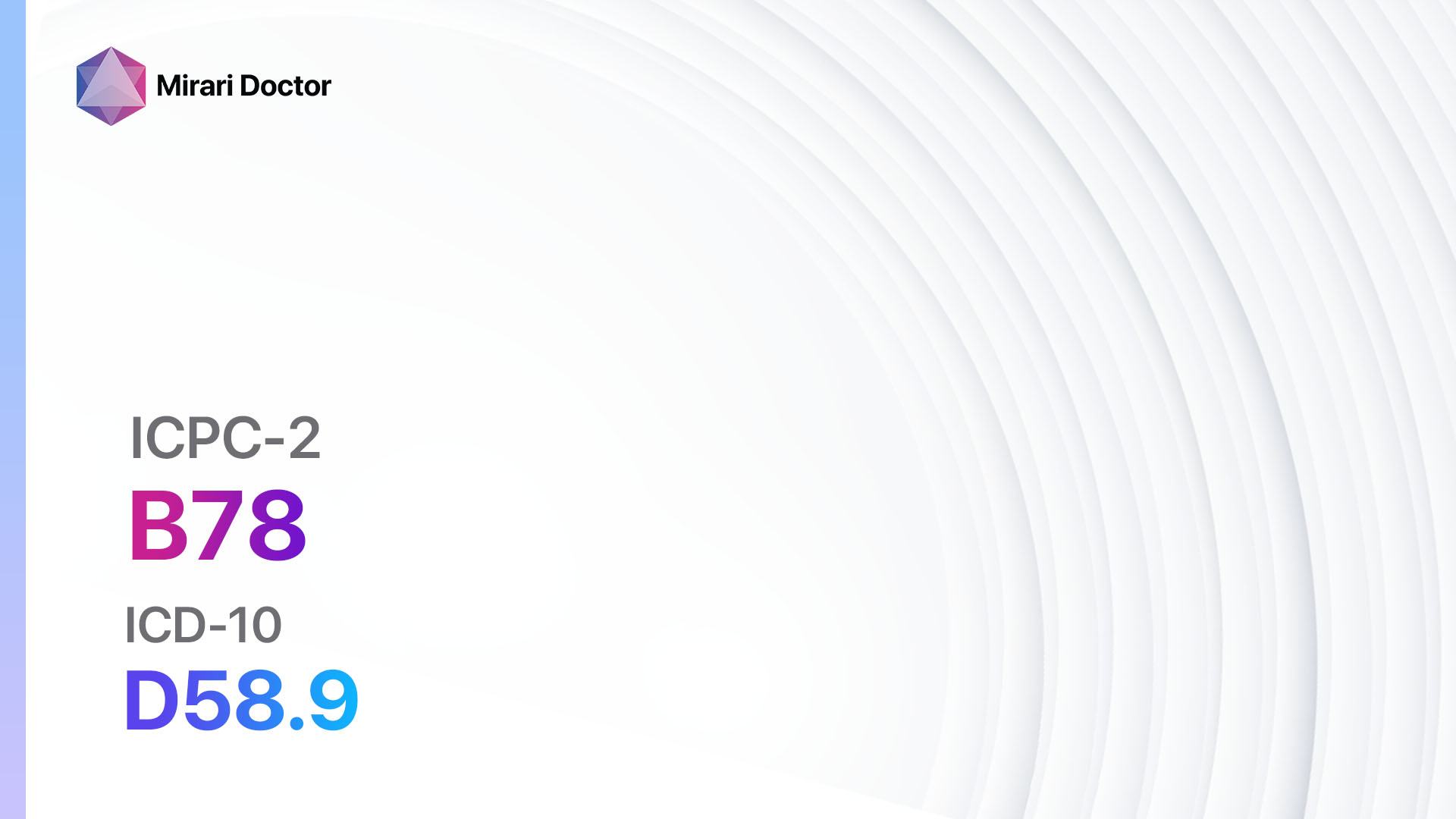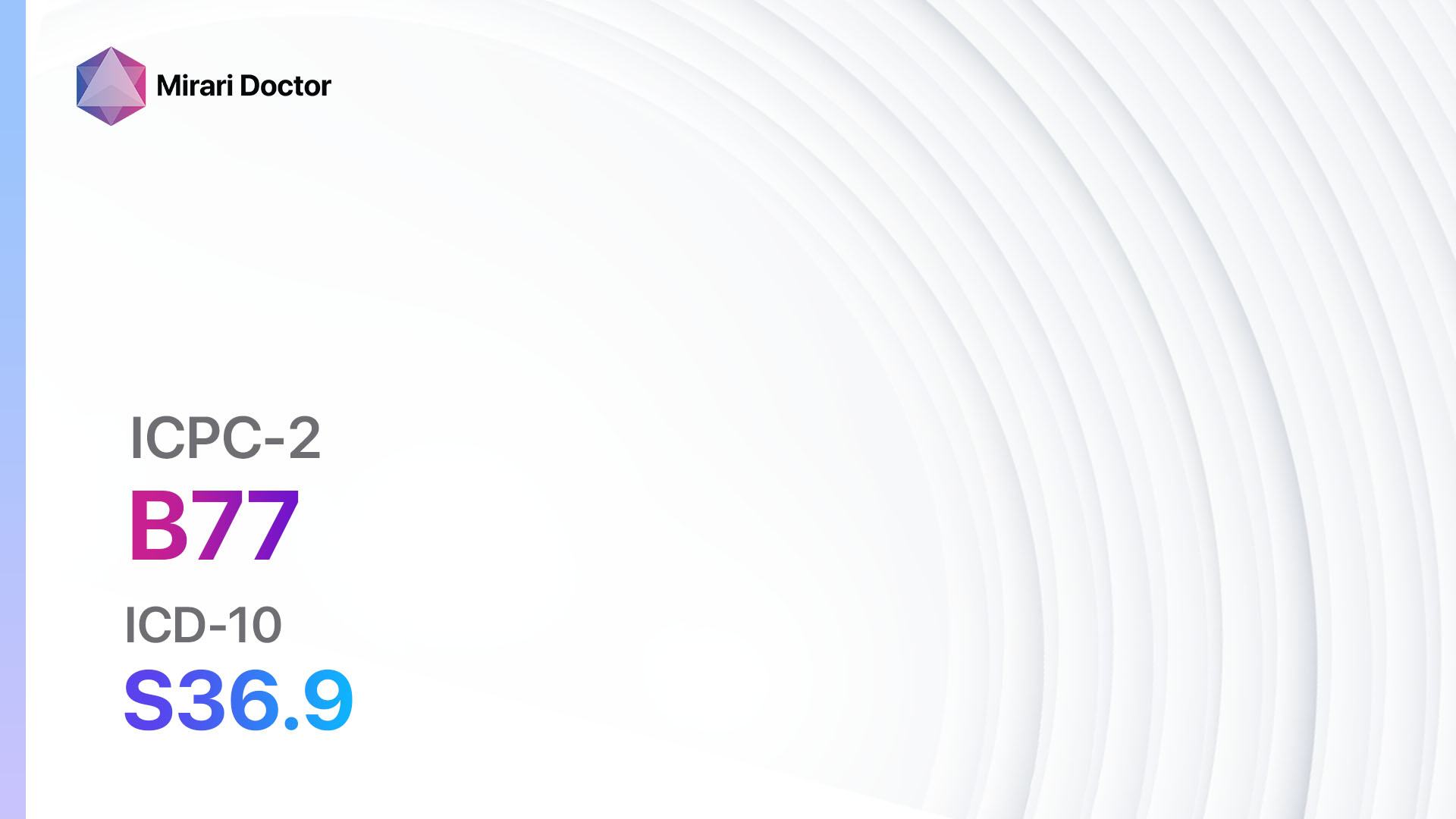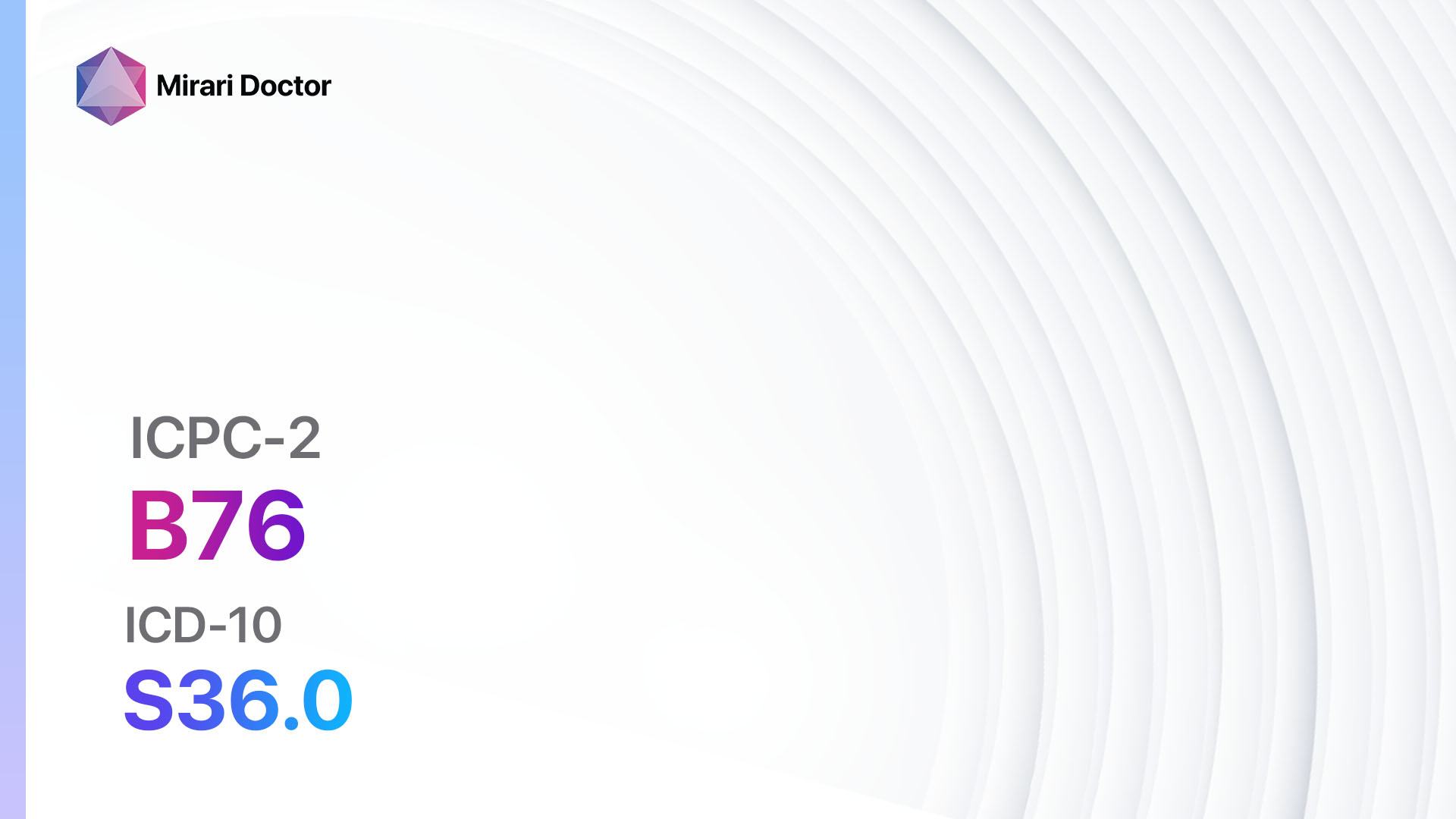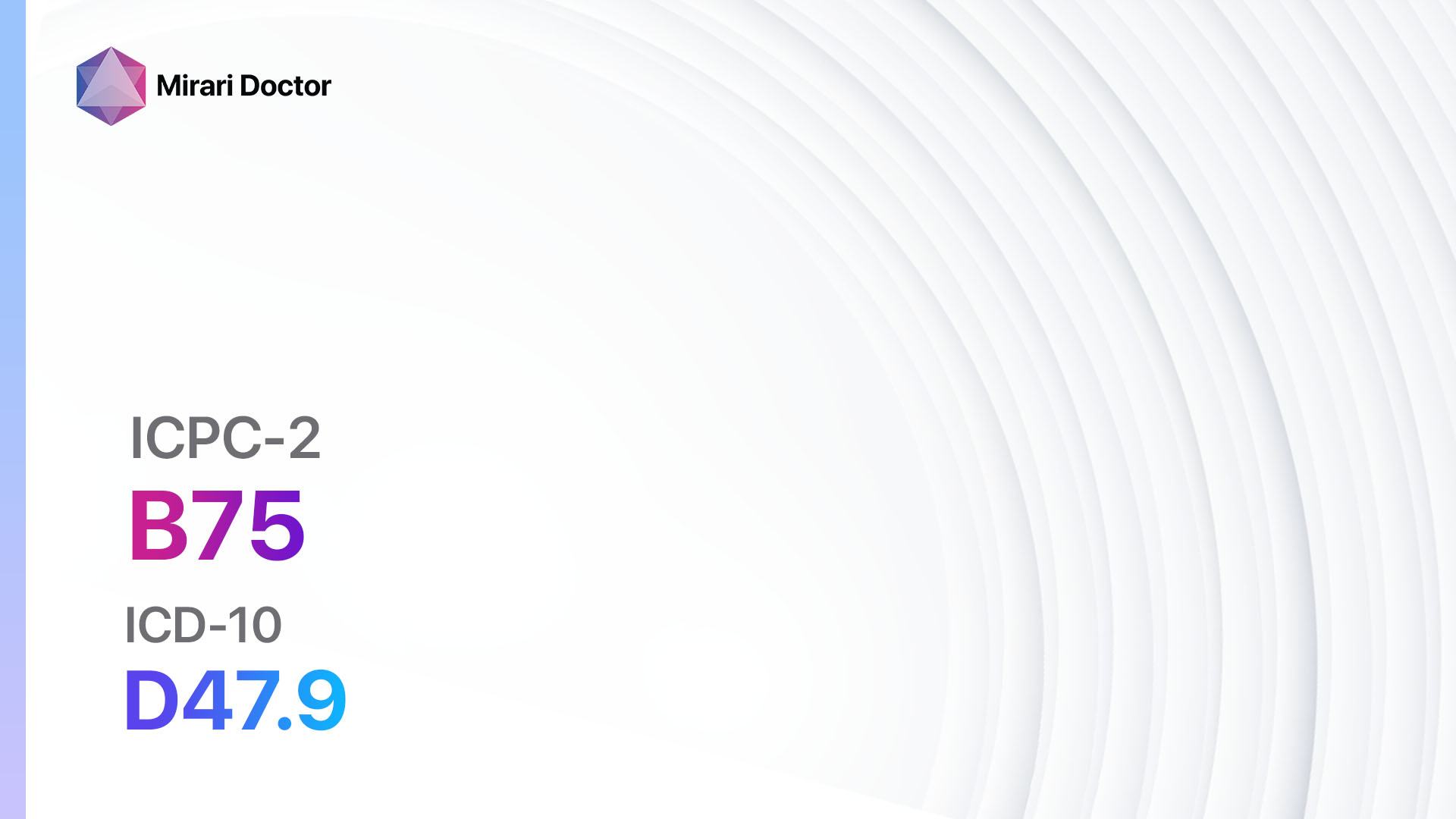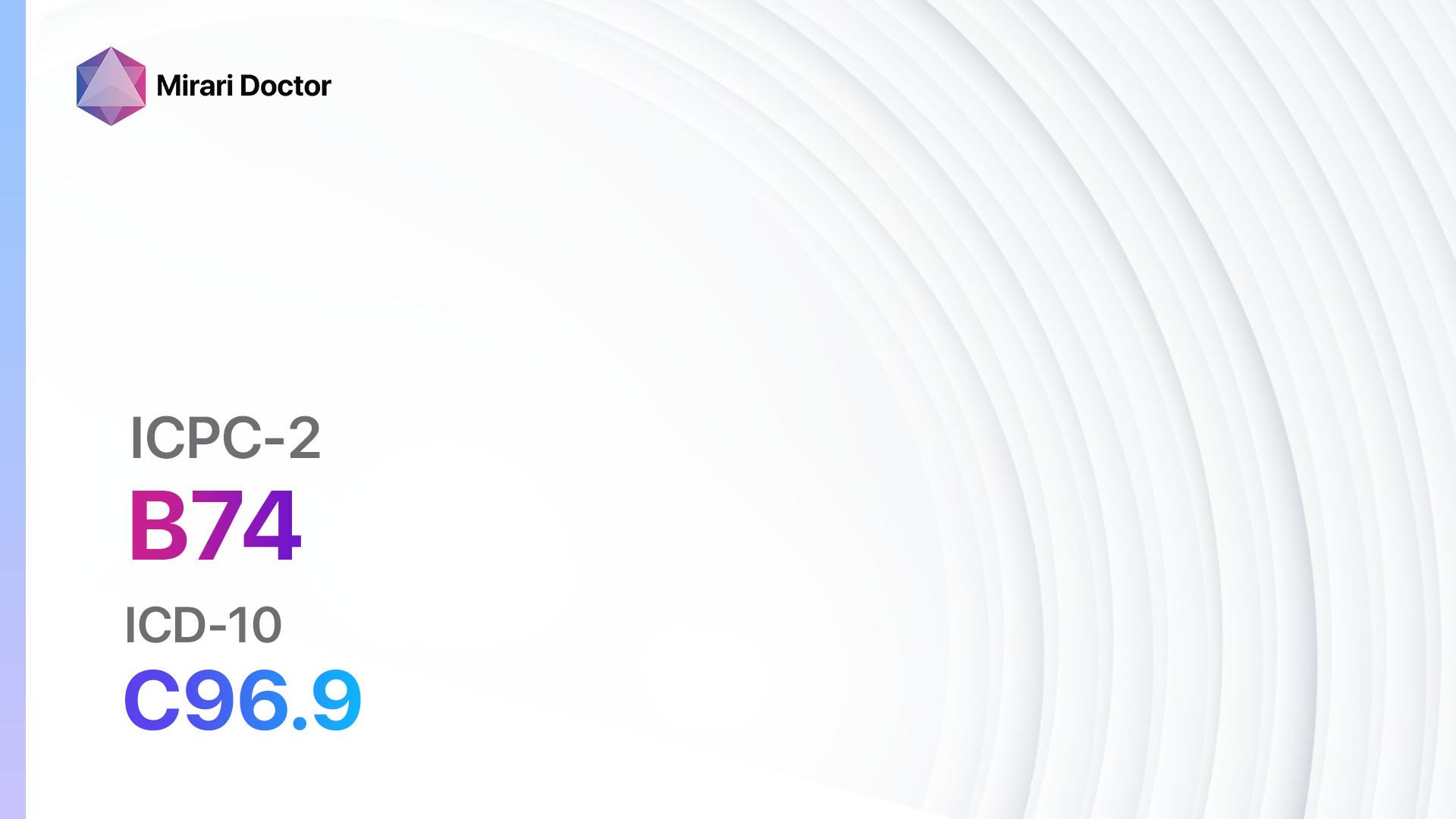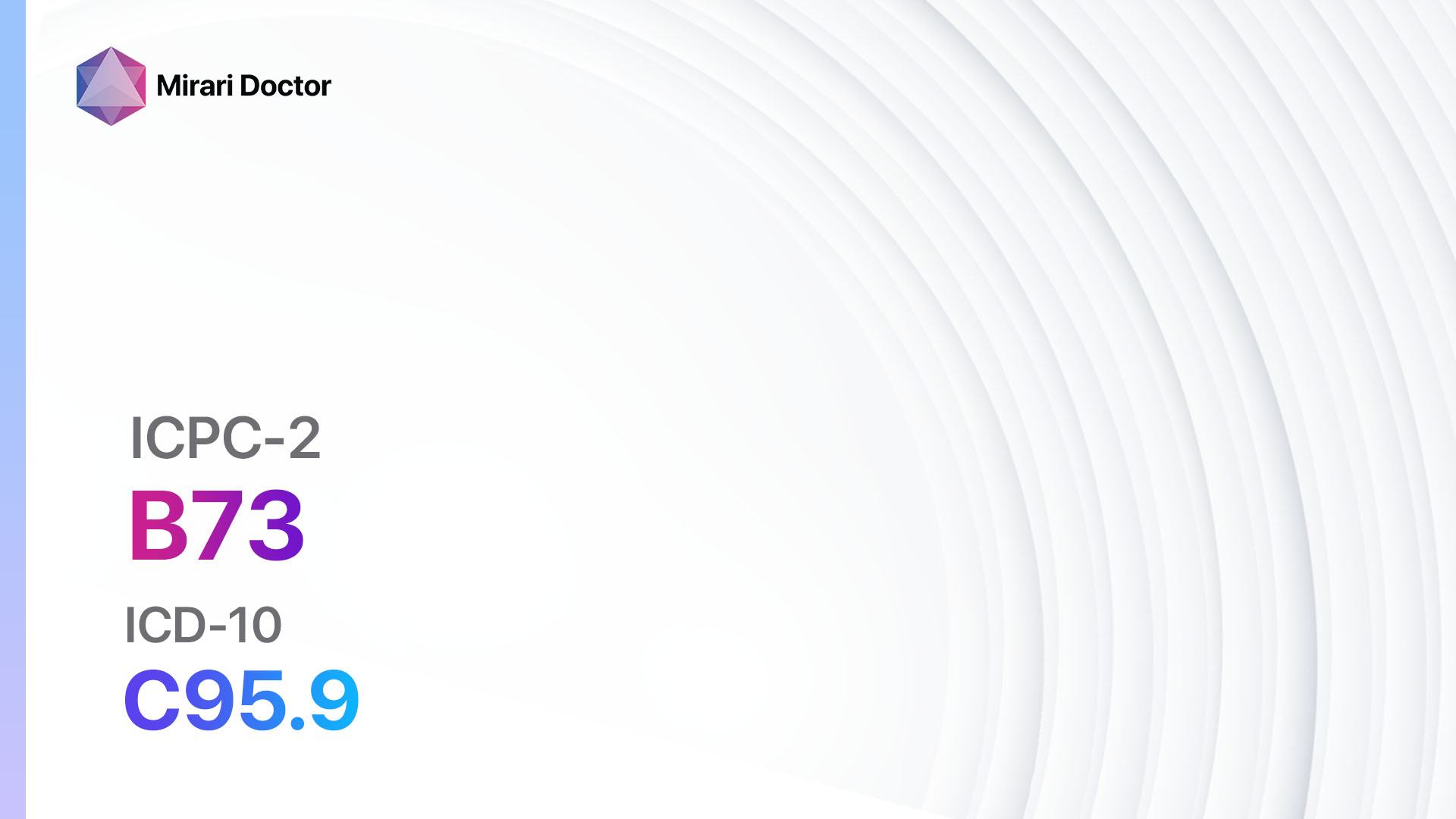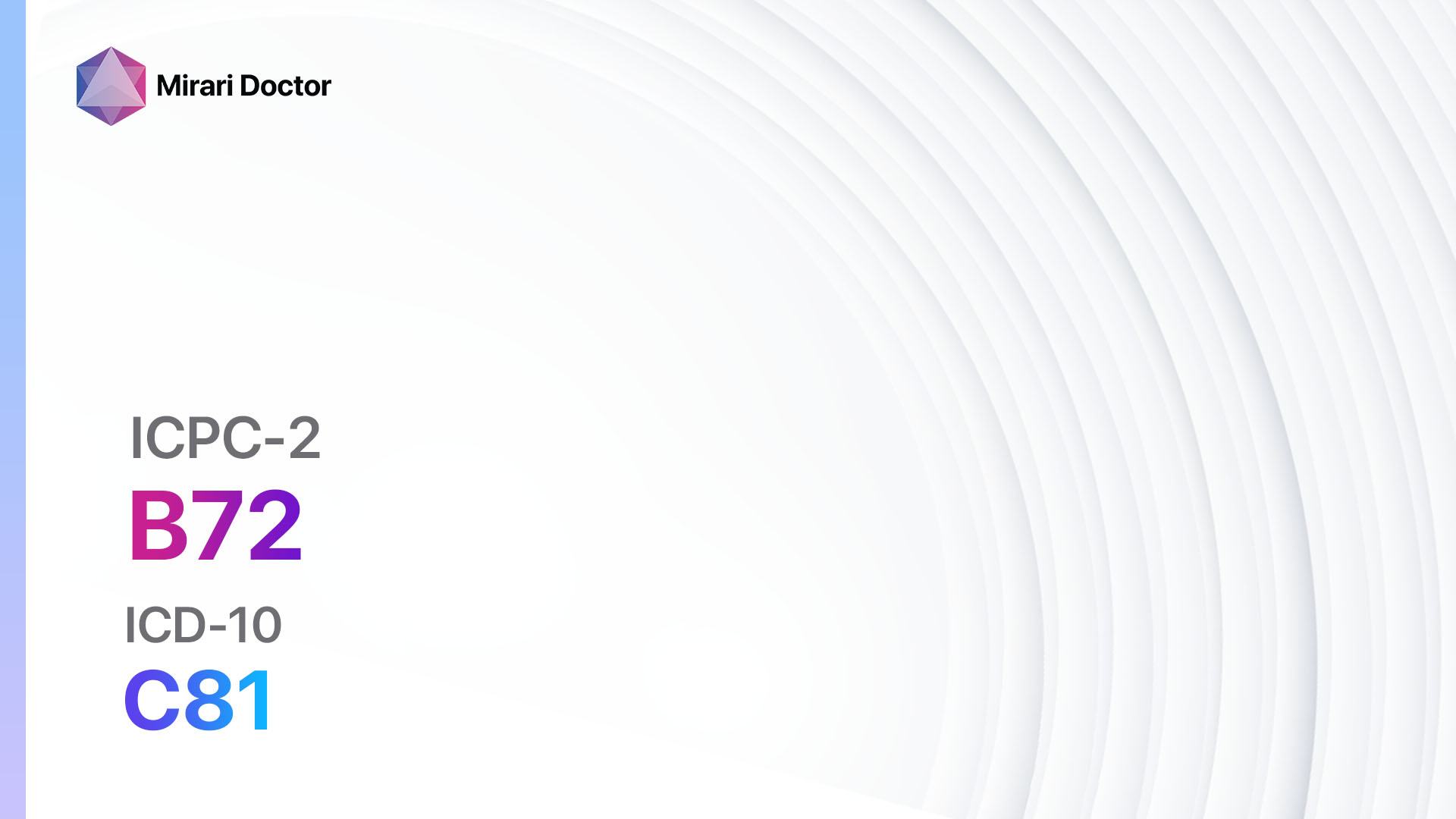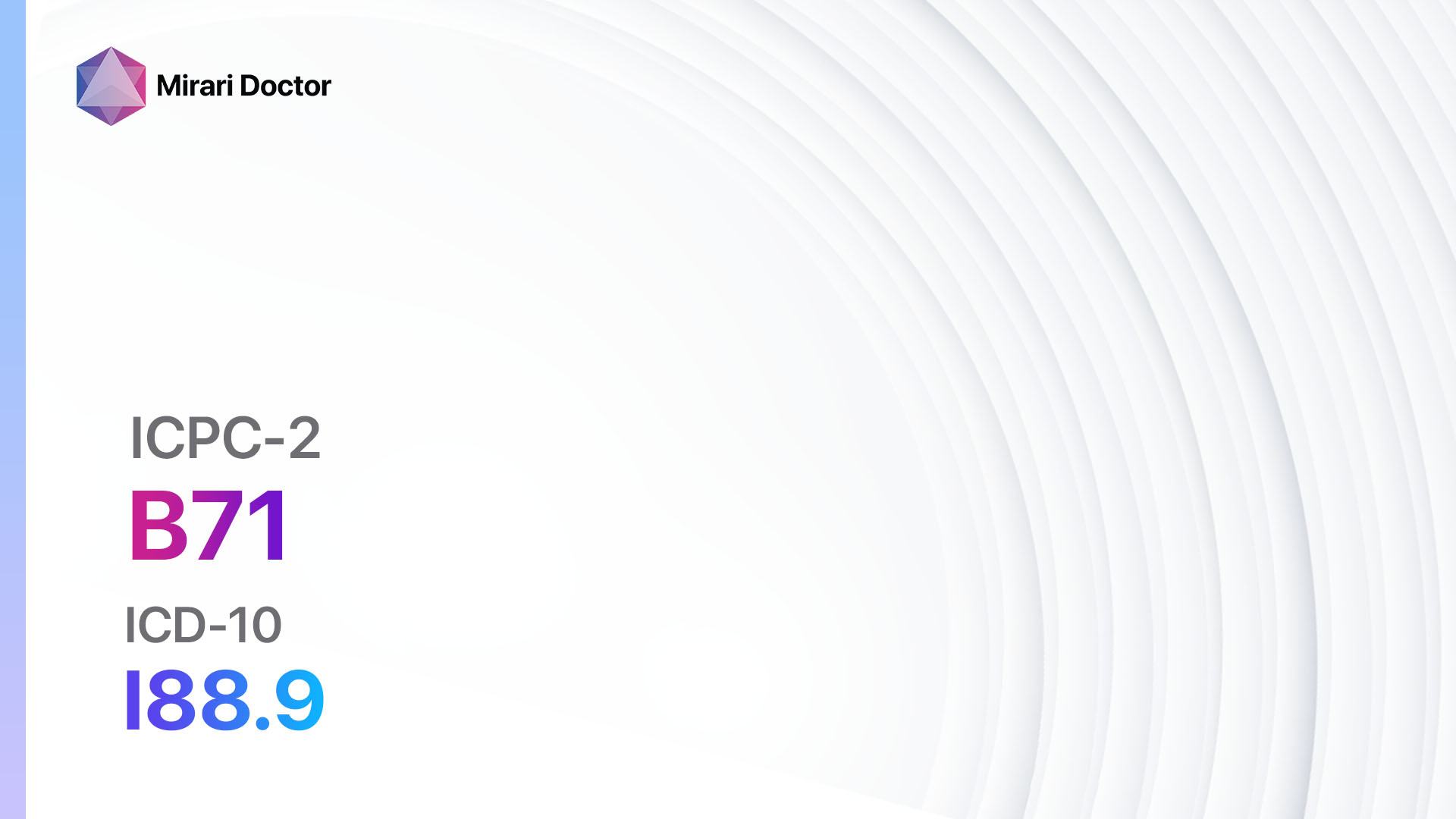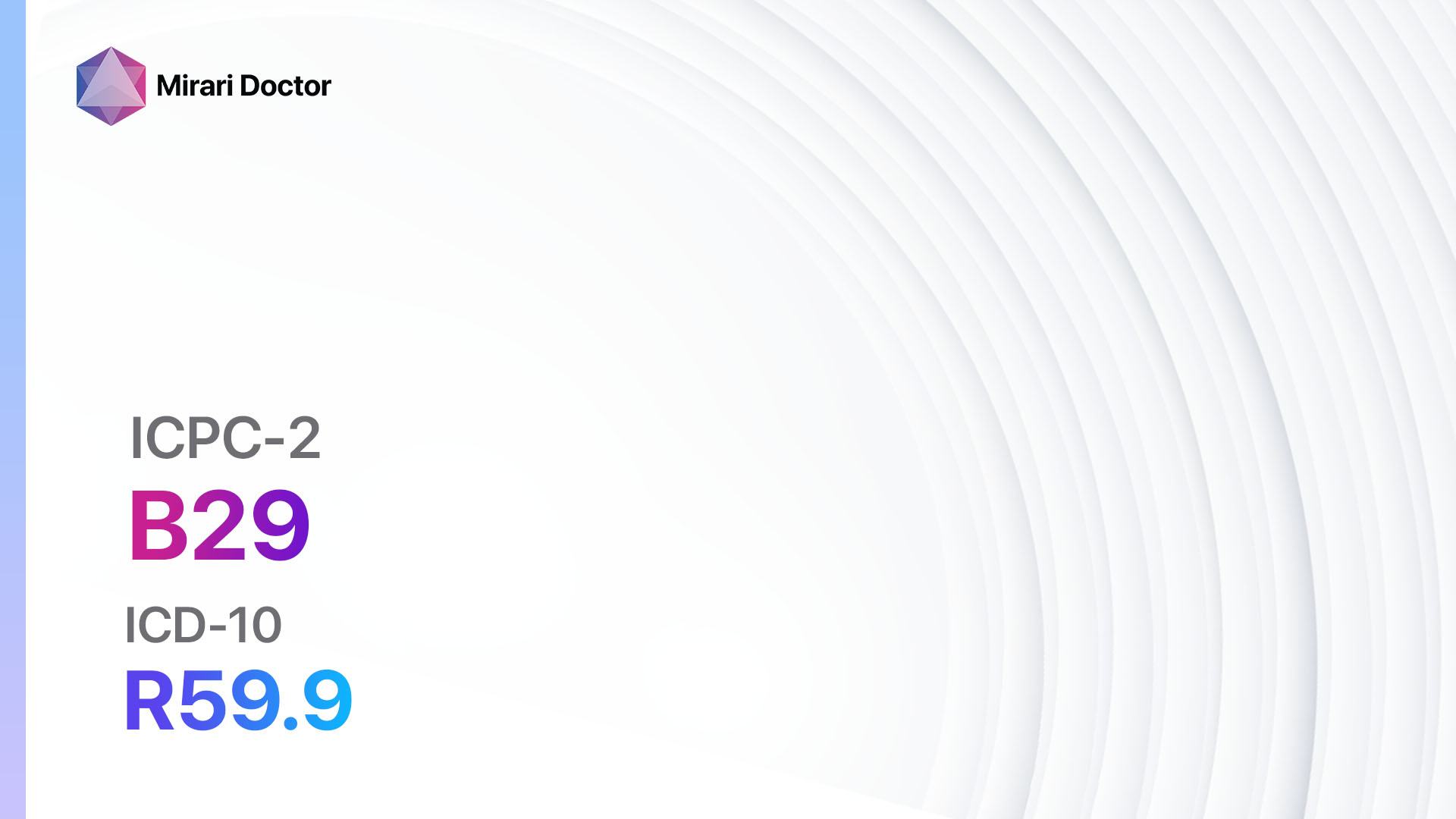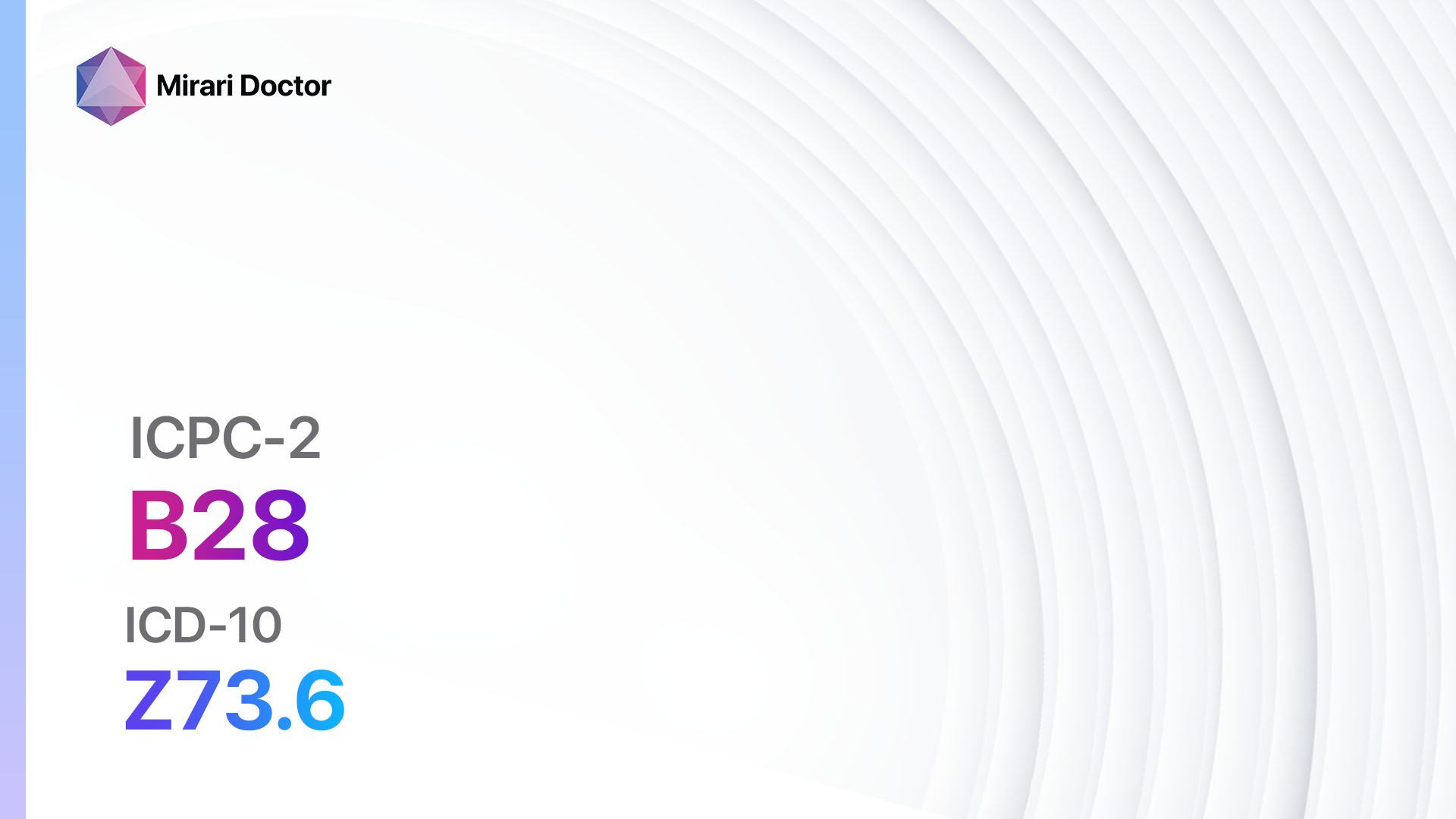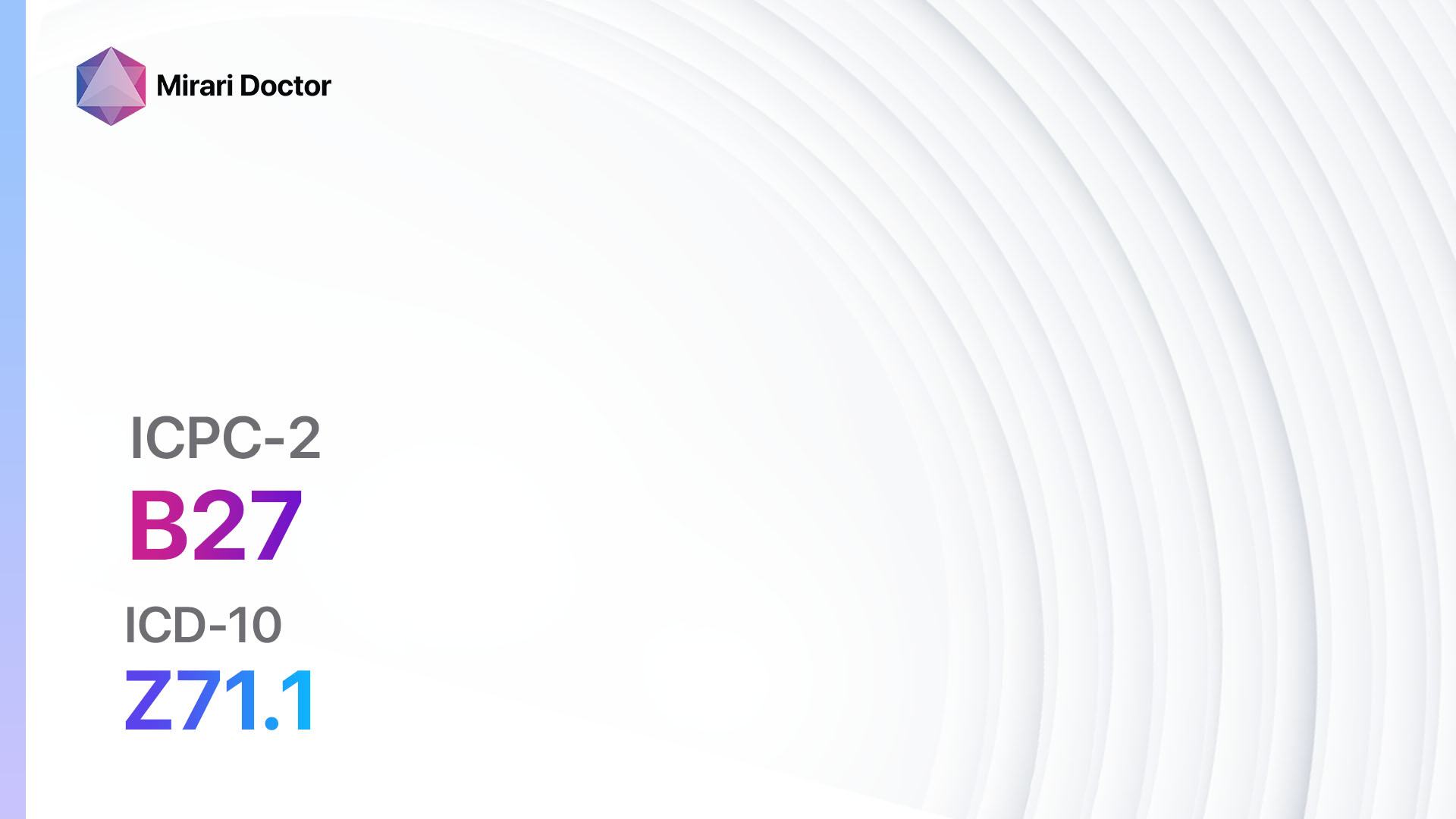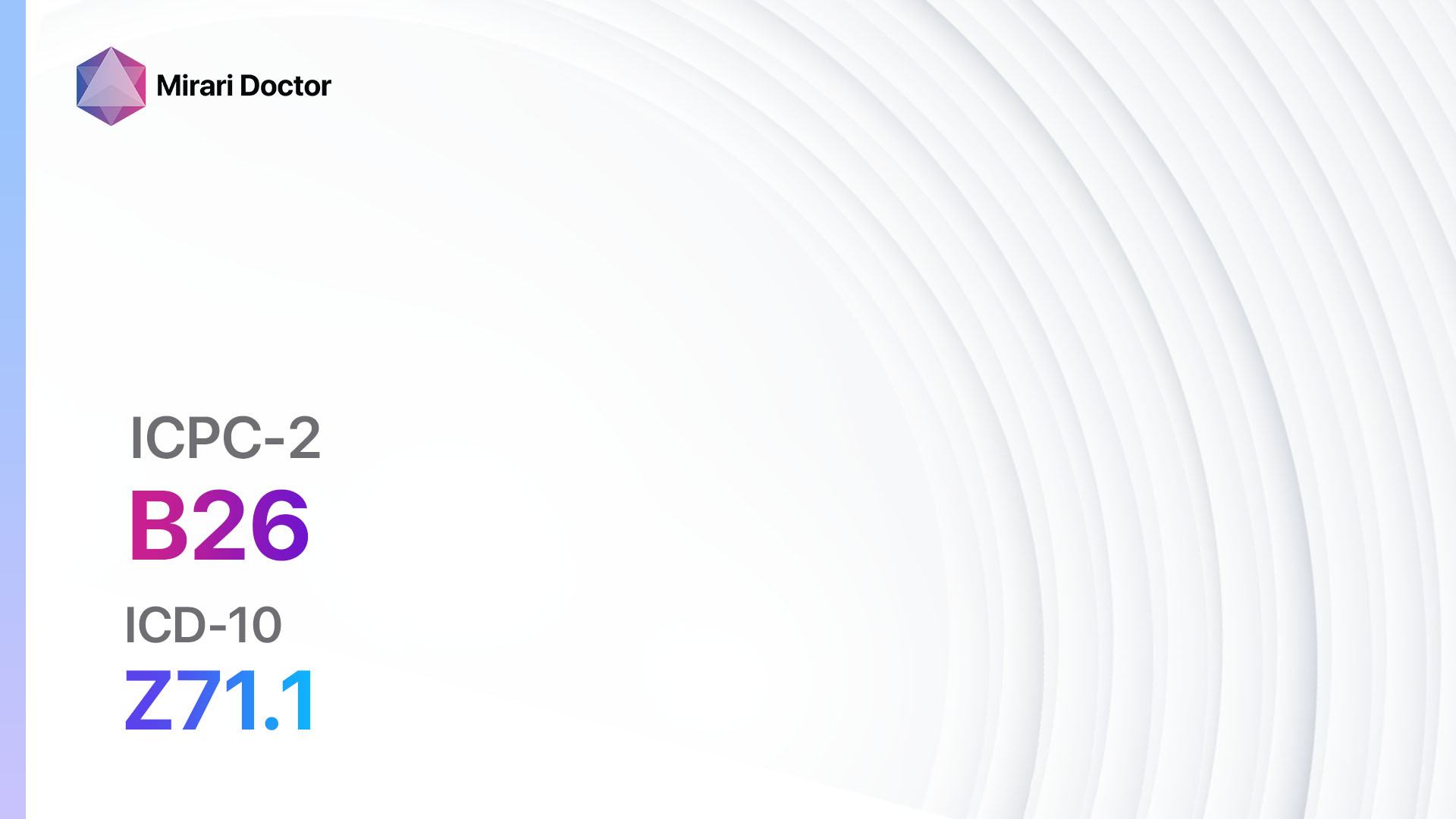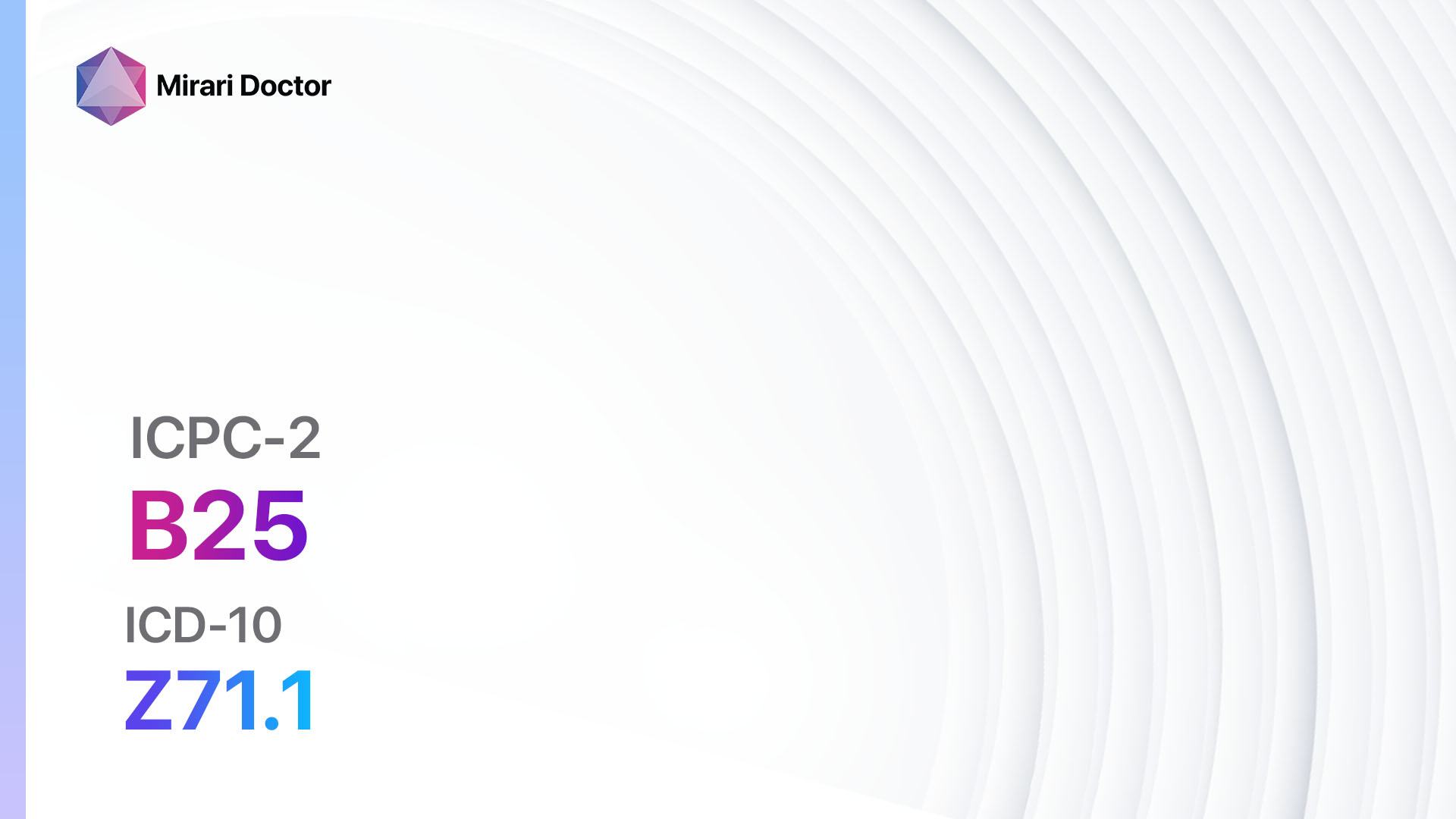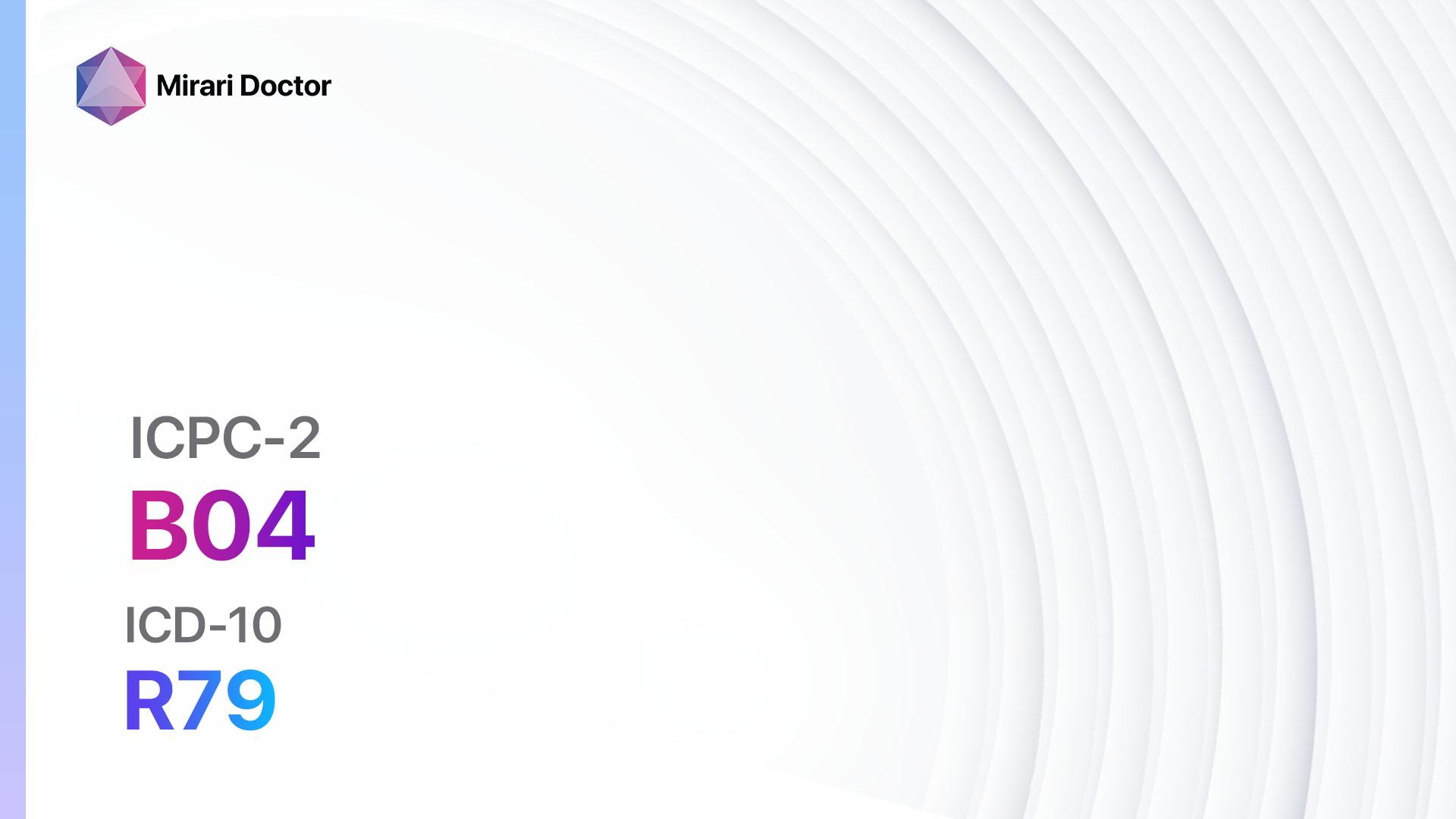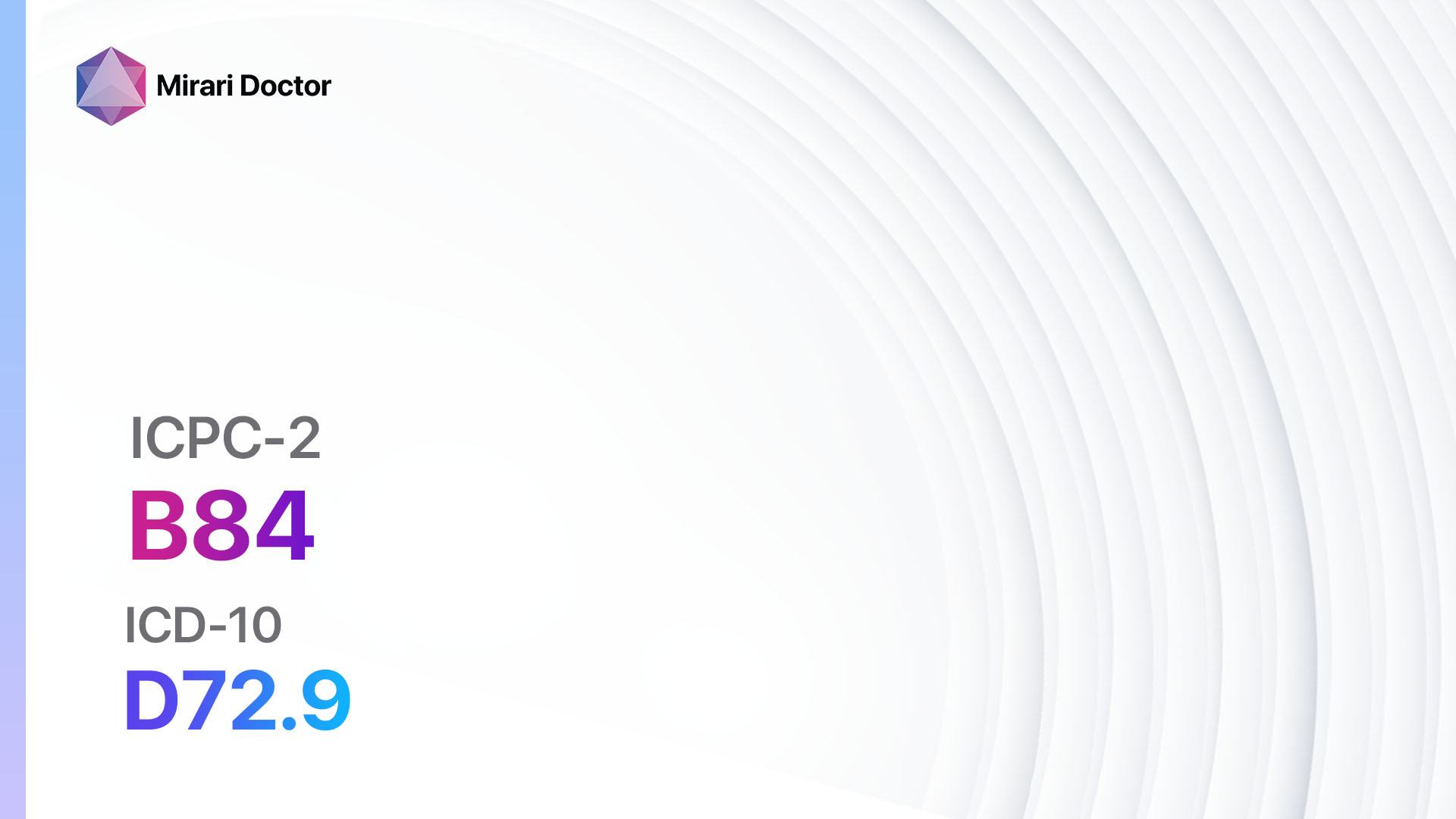
Introduction
Unexplained abnormal white cells refer to a condition where the white blood cell count is abnormal, but the underlying cause is unknown[1]. This condition can be concerning as it may indicate an underlying infection, inflammation, or even a blood disorder[2]. The aim of this guide is to provide a step-by-step approach to diagnosing and managing patients with unexplained abnormal white cells.
Codes
- ICPC-2 Code: B84 Unexplained abnormal white cells[3]
- ICD-10 Code: D72.9 Disorder of white blood cells, unspecified[4]
Symptoms
- Fatigue: Patients may experience excessive tiredness and lack of energy[5].
- Fever: Some patients may have an elevated body temperature[6].
- Frequent infections: Patients may have recurrent infections, such as respiratory or urinary tract infections[7].
- Easy bruising or bleeding: Abnormal white cells can affect the body’s ability to clot blood, leading to easy bruising or bleeding[8].
- Enlarged lymph nodes: Swollen lymph nodes may be present in some cases[9].
Causes
- Infection: Viral, bacterial, or fungal infections can cause abnormal white cell counts[10]
- Inflammation: Conditions such as rheumatoid arthritis or inflammatory bowel disease can lead to abnormal white cells.
- Blood disorders: Leukemia, lymphoma, or myelodysplastic syndrome can cause abnormal white cell counts.
- Medications: Certain medications, such as chemotherapy drugs or immunosuppressants, can affect white cell counts.
Diagnostic Steps
Medical History
- Gather information about the patient’s symptoms, including the duration and severity.
- Ask about any recent infections or illnesses.
- Inquire about any medications the patient is currently taking.
- Assess the patient’s medical history, including any previous blood disorders or autoimmune conditions.
Physical Examination
- Perform a thorough physical examination, including palpation of lymph nodes, checking for signs of infection or inflammation, and assessing for any other abnormal findings.
Laboratory Tests
- Complete blood count (CBC): This test measures the levels of different types of blood cells, including white blood cells. Abnormal levels may indicate an underlying condition.
- Differential white blood cell count: This test provides information about the different types of white blood cells present in the blood. An imbalance in the types of white cells can indicate a specific condition.
- Blood smear: A blood smear allows for a detailed examination of the white blood cells under a microscope. Abnormalities in the size, shape, or number of cells can provide valuable diagnostic information.
- Bone marrow biopsy: In some cases, a bone marrow biopsy may be necessary to evaluate the production and maturation of white blood cells. This procedure involves taking a small sample of bone marrow for analysis.
Diagnostic Imaging
- Chest X-ray: A chest X-ray may be performed to assess the presence of any lung infections or abnormalities.
- CT scan or MRI: These imaging modalities can provide detailed images of the body’s organs and tissues, helping to identify any underlying causes of abnormal white cells.
Other Tests
- Flow cytometry: This specialized test can analyze the characteristics of individual white blood cells, helping to identify specific types of blood disorders.
- Genetic testing: In some cases, genetic testing may be necessary to identify any genetic abnormalities that may be causing abnormal white cells.
Follow-up and Patient Education
- Schedule follow-up appointments to monitor the patient’s progress and response to treatment.
- Provide education to the patient about their condition, including any lifestyle modifications or medication adherence.
Possible Interventions
Traditional Interventions
Medications:
Top 5 drugs for unexplained abnormal white cells:
- Antibiotics: Cost: Varies depending on the specific antibiotic. Contraindications: Allergy to the specific antibiotic. Side effects: Nausea, diarrhea, allergic reactions. Severe side effects: Severe allergic reactions, Clostridium difficile infection. Drug interactions: Varies depending on the specific antibiotic. Warning: Complete the full course of antibiotics as prescribed.
- Corticosteroids: Cost: Varies depending on the specific corticosteroid. Contraindications: Active infections, systemic fungal infections. Side effects: Increased appetite, weight gain, mood changes. Severe side effects: Increased risk of infections, osteoporosis. Drug interactions: Varies depending on the specific corticosteroid. Warning: Do not abruptly stop taking corticosteroids.
- Immunosuppressants: Cost: Varies depending on the specific immunosuppressant. Contraindications: Active infections, pregnancy. Side effects: Increased risk of infections, gastrointestinal symptoms. Severe side effects: Increased risk of certain cancers, liver toxicity. Drug interactions: Varies depending on the specific immunosuppressant. Warning: Regular monitoring of blood counts and liver function is required.
- Chemotherapy: Cost: Varies depending on the specific chemotherapy drugs. Contraindications: Pregnancy, active infections. Side effects: Nausea, hair loss, fatigue. Severe side effects: Increased risk of infections, bone marrow suppression. Drug interactions: Varies depending on the specific chemotherapy drugs. Warning: Chemotherapy should be administered under the supervision of an oncologist.
- Biological therapies: Cost: Varies depending on the specific biological therapy. Contraindications: Active infections, pregnancy. Side effects: Injection site reactions, flu-like symptoms. Severe side effects: Increased risk of infections, infusion reactions. Drug interactions: Varies depending on the specific biological therapy. Warning: Regular monitoring for signs of infection is required.
Alternative Drugs:
- Herbal supplements: Some herbal supplements, such as echinacea or garlic, may have potential immune-boosting effects. Cost: Varies depending on the specific supplement.
- Vitamin supplements: Certain vitamins, such as vitamin C or vitamin D, may support immune function. Cost: Varies depending on the specific supplement.
- Probiotics: Probiotics may help support a healthy immune system. Cost: Varies depending on the specific probiotic product.
Surgical Procedures:
- In some cases, surgical intervention may be necessary to treat the underlying cause of abnormal white cells. The specific procedure will depend on the underlying condition and should be discussed with a specialist.
Alternative Interventions
- Acupuncture: May help support immune function and reduce inflammation. Cost: $60-$120 per session.
- Herbal supplements: Certain herbs, such as astragalus or reishi mushroom, may have immune-boosting properties. Cost: Varies depending on the specific supplement.
- Mind-body techniques: Practices such as meditation, yoga, or tai chi may help reduce stress and support immune function. Cost: Varies depending on the specific practice.
Lifestyle Interventions
- Adequate sleep: Getting enough sleep is essential for immune function. Cost: Varies depending on individual sleep habits and preferences.
- Balanced diet: A healthy diet rich in fruits, vegetables, and lean proteins can support immune function. Cost: Varies depending on individual dietary choices.
- Regular exercise: Physical activity can help boost immune function and overall health. Cost: Varies depending on individual preferences and access to exercise facilities.
It is important to note that the cost ranges provided are approximate and may vary depending on the location and availability of the interventions.
Mirari Cold Plasma Alternative Intervention
Understanding Mirari Cold Plasma
- Safe and Non-Invasive Treatment: Mirari Cold Plasma is a safe and non-invasive treatment option for various skin conditions. It does not require incisions, minimizing the risk of scarring, bleeding, or tissue damage.
- Efficient Extraction of Foreign Bodies: Mirari Cold Plasma facilitates the removal of foreign bodies from the skin by degrading and dissociating organic matter, allowing easier access and extraction.
- Pain Reduction and Comfort: Mirari Cold Plasma has a local analgesic effect, providing pain relief during the treatment, making it more comfortable for the patient.
- Reduced Risk of Infection: Mirari Cold Plasma has antimicrobial properties, effectively killing bacteria and reducing the risk of infection.
- Accelerated Healing and Minimal Scarring: Mirari Cold Plasma stimulates wound healing and tissue regeneration, reducing healing time and minimizing the formation of scars.
Mirari Cold Plasma Prescription
Video instructions for using Mirari Cold Plasma Device – B84 Unexplained abnormal white cells (ICD-10:D72.9)
| Mild | Moderate | Severe |
| Mode setting: 7 (Immunotherapy) Location: 1 (Sacrum) Morning: 15 minutes, Evening: 15 minutes |
Mode setting: 7 (Immunotherapy) Location: 1 (Sacrum) Morning: 30 minutes, Lunch: 30 minutes, Evening: 30 minutes |
Mode setting: 7 (Immunotherapy) Location: 1 (Sacrum) Morning: 30 minutes, Lunch: 30 minutes, Evening: 30 minutes |
| Mode setting: 7 (Immunotherapy) Location: 4 (Heart, Bile & Pancreas) Morning: 15 minutes, Evening: 15 minutes |
Mode setting: 7 (Immunotherapy) Location: 4 (Heart, Bile & Pancreas) Morning: 30 minutes, Lunch: 30 minutes, Evening: 30 minutes |
Mode setting: 7 (Immunotherapy) Location: 4 (Heart, Bile & Pancreas) Morning: 30 minutes, Lunch: 30 minutes, Evening: 30 minutes |
| Mode setting: 7 (Immunotherapy) Location: 1 (Sacrum) Morning: 15 minutes, Evening: 15 minutes |
Mode setting: 7 (Immunotherapy) Location: 1 (Sacrum) Morning: 30 minutes, Lunch: 30 minutes, Evening: 30 minutes |
Mode setting: 7 (Immunotherapy) Location: 1 (Sacrum) Morning: 30 minutes, Lunch: 30 minutes, Evening: 30 minutes |
| Total Morning: 45 minutes approx. $7.50 USD, Evening: 45 minutes approx. $7.50 USD |
Total Morning: 90 minutes approx. $15 USD, Lunch: 90 minutes approx. $15 USD, Evening: 90 minutes approx. $15 USD |
Total Morning: 90 minutes approx. $15 USD, Lunch: 90 minutes approx. $15 USD, Evening: 90 minutes approx. $15 USD |
| Usual treatment for 7-60 days approx. $105 USD – $900 USD | Usual treatment for 6-8 weeks approx. $1,890 USD – $2,520 USD |
Usual treatment for 3-6 months approx. $4,050 USD – $8,100 USD
|
 |
|
Use the Mirari Cold Plasma device to treat Unexplained abnormal white cells effectively.
WARNING: MIRARI COLD PLASMA IS DESIGNED FOR THE HUMAN BODY WITHOUT ANY ARTIFICIAL OR THIRD PARTY PRODUCTS. USE OF OTHER PRODUCTS IN COMBINATION WITH MIRARI COLD PLASMA MAY CAUSE UNPREDICTABLE EFFECTS, HARM OR INJURY. PLEASE CONSULT A MEDICAL PROFESSIONAL BEFORE COMBINING ANY OTHER PRODUCTS WITH USE OF MIRARI.
Step 1: Cleanse the Skin
- Start by cleaning the affected area of the skin with a gentle cleanser or mild soap and water. Gently pat the area dry with a clean towel.
Step 2: Prepare the Mirari Cold Plasma device
- Ensure that the Mirari Cold Plasma device is fully charged or has fresh batteries as per the manufacturer’s instructions. Make sure the device is clean and in good working condition.
- Switch on the Mirari device using the power button or by following the specific instructions provided with the device.
- Some Mirari devices may have adjustable settings for intensity or treatment duration. Follow the manufacturer’s instructions to select the appropriate settings based on your needs and the recommended guidelines.
Step 3: Apply the Device
- Place the Mirari device in direct contact with the affected area of the skin. Gently glide or hold the device over the skin surface, ensuring even coverage of the area experiencing.
- Slowly move the Mirari device in a circular motion or follow a specific pattern as indicated in the user manual. This helps ensure thorough treatment coverage.
Step 4: Monitor and Assess:
- Keep track of your progress and evaluate the effectiveness of the Mirari device in managing your Unexplained abnormal white cells. If you have any concerns or notice any adverse reactions, consult with your health care professional.
Note
This guide is for informational purposes only and should not replace the advice of a medical professional. Always consult with your healthcare provider or a qualified medical professional for personal advice, diagnosis, or treatment. Do not solely rely on the information presented here for decisions about your health. Use of this information is at your own risk. The authors of this guide, nor any associated entities or platforms, are not responsible for any potential adverse effects or outcomes based on the content.
Mirari Cold Plasma System Disclaimer
- Purpose: The Mirari Cold Plasma System is a Class 2 medical device designed for use by trained healthcare professionals. It is registered for use in Thailand and Vietnam. It is not intended for use outside of these locations.
- Informational Use: The content and information provided with the device are for educational and informational purposes only. They are not a substitute for professional medical advice or care.
- Variable Outcomes: While the device is approved for specific uses, individual outcomes can differ. We do not assert or guarantee specific medical outcomes.
- Consultation: Prior to utilizing the device or making decisions based on its content, it is essential to consult with a Certified Mirari Tele-Therapist and your medical healthcare provider regarding specific protocols.
- Liability: By using this device, users are acknowledging and accepting all potential risks. Neither the manufacturer nor the distributor will be held accountable for any adverse reactions, injuries, or damages stemming from its use.
- Geographical Availability: This device has received approval for designated purposes by the Thai and Vietnam FDA. As of now, outside of Thailand and Vietnam, the Mirari Cold Plasma System is not available for purchase or use.
References
- Cleveland Clinic. (2022). Leukocytosis (High White Blood Cell Count): Causes & Symptoms. https://my.clevelandclinic.org/health/diseases/17704-high-white-blood-cell-count
- MedicineNet. (n.d.). Why Is My White Blood Cell Count High? https://www.medicinenet.com/why_is_my_white_blood_cell_count_high/article.htm
- PH3C. (n.d.). Appendix 4: Code groups from ICPC-2 and ICPC-2 PLUS. https://ses.library.usyd.edu.au/bitstream/handle/2123/9365/Appendix_4_YEAR_15.pdf;jsessionid=8085263220E858410552F947A5C7F65F?sequence=5
- ICD10data.com. (2024). 2024 ICD-10-CM Codes D72*: Other disorders of white blood cells. https://www.icd10data.com/ICD10CM/Codes/D50-D89/D70-D77/D72-
- WebMD. (n.d.). Low White Blood Cell Count: Causes and Solutions. https://www.webmd.com/cancer/white-blood-cell-count-low
- MedicineNet. (n.d.). Why Is My White Blood Cell Count High? https://www.medicinenet.com/why_is_my_white_blood_cell_count_high/article.htm
- Health.com. (n.d.). What Does A High White Blood Cell Count (Leukocytosis) Mean? https://www.health.com/high-white-blood-cell-count-7108187
- StatPearls. (2022). Leukocytosis. https://www.ncbi.nlm.nih.gov/books/NBK560882/
- Narayana Health. (n.d.). High White Blood Cell Count – Causes, Symptoms & Treatment. https://www.narayanahealth.org/blog/high-white-blood-cell-count-causes-symptoms-treatment
- Medical News Today. (2018). Leukopenia (Low white blood cell count): Causes and more. https://www.medicalnewstoday.com/articles/320299
Related articles
Made in USA


